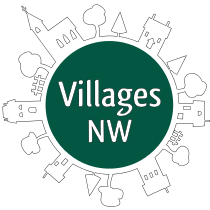According to the Greater Portland Pulse, there were over 190,000 people aged 65 and older living in the Portland metro area as of the 2010 census. By 2030, that number is expected to grow to almost 395,000.
That’s a lot of people. So many in fact that even if they all wanted to move into retirement facilities, there is no way they could do so. There simply aren’t enough facilities in existence or being built to accommodate that many people. Not to mention that a huge percentage of this population—current estimates suggest up to 75%—don’t have enough retirement savings to be able to afford the $3000+ per month it would cost.
Fortunately, it’s not where most of us want to end up.
According to a recent survey by AARP, 89% of older adults want to age in their own homes and neighborhoods. This is particularly true of the Boomers who visited their grandparents in “old age homes.” It’s not the vision of aging they have for themselves.
For most Boomers—-indeed, for most older adults—-their vision of aging is one of aging-in-place. Of growing old, if not in the home they have lived in for 40 years, at least in the neighborhood and community they know and love.
Fortunately, their desire to age-in-place turns out to be a very good thing—good for them and good for society. Aging-in-place has been found to improve seniors’ overall health, life satisfaction and self-esteem. It improves both their longevity and their quality of life.
Aging-in-place is also cost-effective. As reported in The Fiscal Times in 2010: “The median monthly cost for nursing home care in 2009 was $5,243 — more than five times that for seniors living at home.” And according to the National Aging in Place Council, “In 2008, the average cost of a home health aide for a single person was $19 per hour. Assisted-living facilities fees were about $3,008 per month.”
Contrast this to the cost of a Village annual membership—which even in the most expensive urban areas tops out at a maximum of $1000 per year and in most cases is considerably lower—and it’s not difficult to see why a recent national report concluded, “Solutions that help seniors age in place are considerably cheaper than the alternatives, and will actually save seniors and taxpayers money by making transportation and services more efficient, while lowering overall healthcare expenditures.”[1]
However, the value of Villages—for their members and for society—does not stop there.
By being focused on building authentic community and relationships between members, Villages dramatically reduce isolation. This can be particularly significant after the loss of a spouse when Village membership helps provide continuity, connection and an ongoing network of support.
Villages are efficient. They do not duplicate services. Instead, they help members make full use of existing community resources and then, fill in the gaps with services from the Village.
Villages are a solution that can work for the middle class and lower middle class, as well as for people with significant means. By making it possible for seniors to get the help they need to age-in-place for as little as $10-15 per week, villages help conserve their (limited) financial resources and help prevent–or at least slow—them from sliding downward into poverty.
Villages help restore purpose and meaning to people’s lives, giving members and volunteers important work to do and finding meaningful ways for each to contribute regardless of age.
Grassroots villages give agency and control back to the seniors themselves. In a Village they are members, stakeholders and decision-makers. They are not patients or clients or customers.
Unlike most approaches to aging, Villages are not age-segregated. Village members continue to live in their own neighborhoods surrounded by and interacting with people of all ages. Additionally, the Village draws its volunteers not just from its members, but from the broader community, which further nurtures intergenerational interaction and relationship.
Villages dramatically reduce the burden on adult children of aging parents by providing the parents with an alternative system of support, which is reliable, affordable and appealing.
For Boomers, Villages provide a way to both “pay it forward” and to craft the kind of retirement support system they want to have for themselves when the time comes.
Villages are an empowerment model. They do not ask “What is someone going to do to help me?” They ask “What can all of us working together do to help each other?”
As a member of the first Village (Beacon Hill Village in Boston) so eloquently put it, “Taking elderly people out of the community bankrupts the community they came from. If we can stay in our own communities as we age, everyone gains.”
We couldn’t agree more.
It will take multiple grassroots Villages to serve the growing senior population of the Portland metro-area alone, and the average development time for a Village is 3-5 years. Every single day nationwide another 10,000 Baby Boomers reach the age of 65. There’s literally no time to waste.
________________________________
[1] from Aging in Place: A State Survey of Liveability Policies and Practices, developed by AARP and the National Council of State Legislatures.
